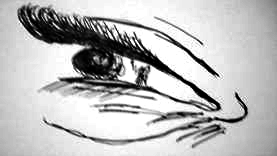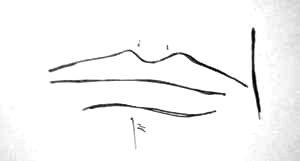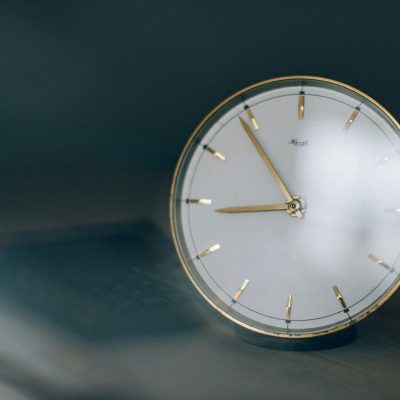1. Question:
Hello! Tell me, is it true that a woman is more difficult to study physiognomically than a man? If so, is she really able to hide her thoughts better?
Psychologist’s Answer:
It is general, from the point of view of physiognomy, but interesting question. Physiognomy likes specificity. Let’s think: to the first part of a question, the answer is “in most cases – Yes”, provided if to take one level of development and relatively identical life experience of the man and the woman in general comparison (and purely female and male physiognomic type of each). Here the woman is more sensitive, and that is laid down by nature faster accumulates the information connected with continuation of a sort (is connected with limited age period of childbearing and corresponding phases of development of a woman). A man is often distracted and, consequently, lags behind in the formation of the main task and its final realization for himself.
If comparison is not general, but narrowly directed, then physiognomy comes to work here. It is important to interpret correctly what exactly we have seen by signs. But everything is individual. Sometimes seemingly insignificant nuances are cardinally changing the position. For example, the sphere of emotions – which at woman (according to generally accepted rules) is more developed, can be brightly expressed at the man (if he belongs to female physiognomic type).
As to the second part of a question, the skill (acquired skill) or ability (i.e. hereditary, laid down, developed) to hide thoughts does not always depend on complexity (if I understand correctly, under complexity I mean multifacetedness at normal development of personality, at normally developed intellect). It is important that “complex” (according to my understanding of this word in this context) people – often more difficult to hide their thoughts, in contrast to simple, because the thought affects the whole spectrum represented in this complex person and gives certain imprints on his face.
The fact is that female physiognomic type (both man and woman) shows the whole spectrum of emotions and in words when wants to conceal thoughts, and in facial expressions. The male type – more often in something one. It confuses many people, if not to define to what physiognomic type this person concerns, without having considered beforehand.
The greatest mysteries lie in what we see,
is what we see, not what is hidden from our eyes.
Oscar Wilde
2. Question:
My girlfriend always has a squint in her eyes when she asks me questions. I’m sending a series of photos to make it clear what I mean. A friend of mine took them discreetly with a professional camera. What does that look say? It’s very important for me to find out!
Answer:
Judging by these photos, you can trace the situation very well! Thank you for your work, it seems that you really love your girlfriend and try to understand her.
Starting from the first photo, you can apply the method of “reading the face” in motion and successfully enough trace a number of micro-movements (head tilt forward, down and slightly sideways, pressing the lower lip up), and visible muscle tension in the eye area – which in this combination speak about distrust of your girlfriend to you.
In the other case, you could assume a vision problem (in principle, one does not exclude the other), but the muscle tension and general gesture is different (it looks like the person seems to be looking at you for a split second). And even if she is in a good mood (as it is noticeable at the moment of photographing), this key distrust is again reflected in the muscular reaction in the eye area at the next question to you, is present all the time in the process of which the essence of the answer is grasped and stops, in the presence of a complete answer.
As you have correctly noted, it really only appears during questions directly to you (because thanks to the photo there is an opportunity to trace), which cuts off the option of complete distrust of you (suspicious attitude as a person) judging by the dynamics of changes in the look. Thus, all this focuses us on the purely personal interest of the girl in you (I assume possible jealousy, coquetry). You should not ask her direct clarifying questions, but just emphasize your sincere attitude to her.

Рис 1.2.

Рис 1.1.

Рис. 1.
3. Question:
Hello!
I have a question about a scar on my boyfriend’s face. I read that facial features matter, but now they are broken! How can I determine his main qualities before the scar and learn about what I can expect from him? The scar is about 2 centimeters long and is almost at a right angle of 90 degrees to the upper lip. Photo attached.
Answer:
Thank you for the question! Let’s consider the picture (Fig.2), which shows the scar and lips and all the facial features that are significant in this question.
To the first part of your question I answer as follows: You are right, indeed an external influence causing such physical changes can change the “map” of the face. After all, physically changed muscle interactions, the smile will change (elementary from new skin folds in the places of damage and in their neighborhood). There may be twitches (various neuralgic manifestations).
I want to note that if a person changes (character) – changes and appearance, appearance changes – changes and the person (character). But with total changes in facial appearance under the influence of external physical influences – characteristic features are always sufficiently marked whatever they are.
In the case of your boyfriend, answering the second part of your question, his main features (which are important to you in the first place) before the scar are as follows – stinginess and a tendency to hoarding, a little wordiness, picky about trifles, good sense of humor, persistence, infantilism, capriciousness, indifference to the problems of others and lack of ethical preferences out of unwillingness to pay attention to them. And set for formation – control of emotional background, the image of “visual austerity”.

4. Question:
Hello!
Can you tell me if facial expressions are the result of upbringing or are there other options? And the second question: do neuropaths really have horizontal wrinkles on the forehead?
Answer:
Yes, it is indeed true. A person’s facial expressions, by and large, are the result of his upbringing and can become a habit. For example, I know a man who wrinkles his nose (and wrinkles it quite a lot) when he emotionally talks about something that should not (logically) be particularly pleasant for him, but at the same time embarrasses him (for example, a pleasant sexual image in a stupid, in his opinion, situation). Capriciousness, stubbornness and excessive squeamishness are his primary traits, and their obvious display on his face is an element of his lack of nurturing in this regard, i.e. there is no need for control. Thus, it has developed into a habit and imprinted on his face. Now he doesn’t realize it.
Besides, people are characterized by the so-called “copying”, it is laid down by nature from childhood of any person and contributes to his development. But sometimes it happens that a person sees something that he likes and subconsciously or consciously adopts what he sees, making it his habit over time (variation of imitation). In this way new touches are mimetically acquired as a demonstration of fashion trends and conformity to “coolness”. But with normal development, “copying” is more common in childhood and adolescence.
It should not be overlooked that sometimes a person lacks the strength to control mental and physical manifestations in mimicry (for example: pain, fear, another), but then it is not the usual mimicry forms and not a direct question of education (which, by the way, takes part in the expression of super strong influences on the person).
Answering your second question, I will say that horizontal wrinkles, which are the result of frequent raising of eyebrows, are the result of a gesture of constant surprise, indignation, dissatisfaction. Indeed, such gestures are very common in neuropaths (as their calling card). Indeed, because of the smallest work, problem and irritation, they wrinkle their foreheads.
5. Question:
Hello, I’m a little wary of people who show aggression. How can I tell by their face?
Answer:
There are combinations, groups and most importantly – there are many of them. After all, there are many diseases, painful states and states of a healthy person – where aggression is present. Besides – if there is a disease – physiognomic approach is one, and if there is a healthy person – it is absolutely other study.
Also, there are people inclined to aggressive behavior and moods, and there are sadists.
If we talk about such distinctions – the key external mimic indicators of a person’s inclination to aggressive behavior (or statement of such behavior) are squinted eyes and fixed gaze at point-blank range, compression of the jaw in such a way that the chewing muscles vibrate, compression of lips.
Key sadistic manifestations on the face, in behavior are the thin mouth ajar, deep-set eyes, coarse laughter, inappropriate laughter, smacking and manipulation of the mouth area, apparent calmness, coldness of the whole face, detachment in relation to the situation, demonstrativeness (as if he is playing in a movie), steadfastness, sharpness in decisions and actions. Such people revel in power, superiority in interaction and the hopelessness of the other. You can see it in the face – “a comprehensive conviction of impunity”.
There are combinations and variants, and both can hide their main features under “mimic masks” or artificially developed habits. The difference is that the aggressor, more often than not, is looking for an outlet for negative emotions, discharge, feeding, and the sadist – a victim that suits him. The aggressor is a direct attack, the sadist – thought out, planned, desired and expected (with the purpose of getting pleasure from the suffering of another). The aggressor can be reprogrammed morally, the sadist – to daze and frighten (bring down the mood).
Besides, the leading role is played by the state of the attacker (in our case it is an aggressor or a sadist) and the level of his intelligence. The situation is a circumstance of committing an offense, not a pushing factor. Since everything that surrounds you externally is refracted through the psychology of the attacker, it is he who chooses the path of further actions.
If you feel some discomfort in this area, read books on Victimology (the science of studying the behavior of victims and perpetrators) or attend appropriate trainings.
6. Question:
Hello! Can you tell me, are facial features considered separately or in a complex? For example, if something stands out (mouth, nose) against the background of the face, what does it mean?
Answer:
Facial features are considered both separately and in a complex, as well as in a complex of individual zones.
Separately – the main hereditary and inherent facts, key character traits are determined. In the complex – who is in front of us at the moment, taking into account everything (age, thinking, peculiarities). In the complex of separate zones – stages of life, destinies, etc.
If something stands out against the background of the face, it is worth determining the original nature – heredity, trauma, other. Often the disease changes the appearance of parts of the face, this should also be taken into account. And depending on the nature – the value is determined.
The best variant in such cases is to compare a present photo and a photo of five years ago, thus it will be possible to carry out the analysis (using physiognomic techniques), and also method of comparative stage-by-stage analysis.
At the end of comparison it will be possible to define – propensities, directions, changes and their reasons, to predict development of diseases or painful conditions – if there are preconditions etc.
7. Question:
Hello! In old children’s movies about kikimors, they have long thin noses that point upwards. What would you say about that nose?
Answer:
Old tales are stories with meaning and lessons. Long nose – speaks of curiosity, inclination to discuss, gossip, thin – to subtle and cunning techniques, active mind, initiative, participation in all new affairs.
If such a spout asserted upward (you should still consider how much and what shape in the lower part) – it speaks of:
lightness, playfulness, sparkle, brilliance, tendency to external beauty, creating a deceitful image, fiction, deceitfulness, superiority, charm, taste, vulnerability, impressionability, charm, fervor, obsession with new ideas, easy perception.
8. Question:
Hello!
A friend of mine has an interesting tooth shape. I’m not sure if I’m addressing the right thing, but when she laughs her “vampire” teeth as I call them, they come in second to last (even though she had them aligned – they still come in!). We’ve known each other for years and I’d like to know what this says (photo attached).
Answer:
Such teeth indicate that the owner is usually not sincere in relations with people. Such a person is sly and very suspicious, cautious by nature. Often such people are strict and like to teach others. But, nevertheless, the owners of such teeth choose one person with whom they are more or less open. It is possible that this person is you.
9. Question:
Hello! An acquaintance of mine laughs so hard you can even see his gums! What does that mean?
Answer:
It depends on whether the upper or lower gums are visible.
Upper – it indicates excessive mental openness, simplicity, sincerity, vulnerability, the need for support of a stronger and more influential person than himself. Such a person is responsive, kind and selfless.
Lower – says that such a person is on his mind, but nevertheless quite often demonstrates not the best of his qualities (for example, manhandling). Such people are often a little fixated on sexuality, but with them you can communicate and negotiate. They are caring towards children.
10. Question:
Hello! When my boss thinks before making decisions, it often feels like he is brushing his teeth with his tongue. But that’s not always the case. Why does it happen?
Answer:
The thinking process is reinforced by this physical reaction, when a person is angry or not quite satisfied with something, but wants not to lose control. He does not necessarily realize it (because it becomes a habit).
If his temperament is calm – he simply resorts to mouth manipulation to calm down. And if he is dynamic – it is just outwardly visible as if he is saying a lot of things and thus relieves tension … or accumulates it (as a variant of control over emotions), so that then he can actually speak out.
11. Question:
Hello!
My man has a dimple on his chin, which the chin itself bifurcates a bit if you look at his face straight on. I consider it the highlight of his face. What does it mean?
Answer:
Such dimple, as you write, is inherent in people – connoisseurs of female beauty, strong-willed, but at the same time duplicitous or ambivalent. In their preferences, they are dodgy and multifaceted, very often sly. Have a peculiarity to speak as if it is crystal clear truth, but it is far from it, in fact.
It is important, thus to define physiognomic type of such person, and also values of all parts of a face for full-scale prognosis on the question of personality.
12. Question:
Hello! I am interested in such a question. If a girl has very thick eyebrows, what does it mean?
Answer:
It depends on what nationality. If they are nationalities that are characterized by such external characteristics – it is one thing. And if they are not – then it means strictness and fairness, masculine point of view (and position) in most cases.
The shape plays a very important role. We give you drawings of eyebrows with characteristics below:
Fig.A Fig.B

Fig.C Fig.D
13. Question:
Hello!
Can I order a part of a physiognomic portrait? For example, only the value of moles?
Answer:
Hello!
You may. Form a separate order and determine whether it will be enough to answer all your questions. Meanings of moles – give information about problems in the spheres of life, are “signs of fate” which are congenital and such that are acquired over time.
For such an order, you need to send us a photo of moles, in good quality, allowing to determine their location on parts of the body, as well as to establish the presence and shape of wrinkles on the skin.
14. Question:
Hello!
Tell me, how long does it take to study physiognomy to become a good, decent level specialist?
Answer:
Hello!
I adhere to the following principle: “there is no limit to perfection”. It should always work. It is impossible to keep yourself at the achieved level without doing anything, because time and development together with it – moves forward, there is a chance to be left behind.
You can not learn everything at once, without reading, without putting experiments, without practicing in honing and polishing knowledge. Theory – allows you to correctly apply practice.
However one study of any science is not enough. The main thing in physiognomic work is practice. Only it allows to see, to understand and to define: at first with mistakes, and after two years of constant practice professional perception (perception with subconscious use of physiognomic knowledge and skills) will appear. And now, from the position of my 8 years of practice, I can say that perfection is perfection when the preliminary efforts made to achieve it become imperceptible.
15. Question:
Hello!
Tell me, and “made” myself silicone lips. Will it affect my character?
Answer:
Hello!
It’s already happening. You feel different, more attractive, sexier. You have solved the issue that was troubling you. Now, you will, as they call it, adapt to yourself, get used to the new image. You will have new habits and movements (and in the area of “acquired changes” too), your individuality will definitely want to emphasize itself. And along with everything – your character will start to change. I wish you success in self-expression and in life!













